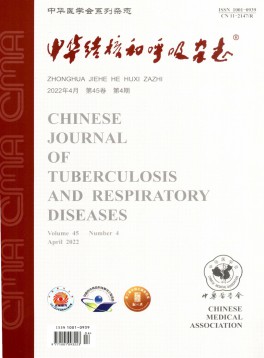【阻塞性睡眠呼吸暂停患者日间过度嗜睡的诊断与治疗专家共识】。
摘要
阻塞性睡眠呼吸暂停(OSA)是一种常见的睡眠呼吸障碍疾病。白天过度嗜睡(EDS)是 OSA 患者最常见的临床表现之一。一些 OSA 患者尽管接受了标准治疗,但仍会残留 EDS。EDS 严重影响患者的职业表现和生活质量,增加交通事故风险,给社会和个人造成经济负担。目前,中国尚无针对 OSA 患者 EDS 的具体诊断或治疗指南。因此,中华胸科学会睡眠障碍学组在国内外最新研究的基础上,制定了本专家共识。该共识就OSA患者EDS的定义、流行病学、临床表现、诊断方法和治疗等方面进行了详细论述,旨在为OSA患者EDS的诊断和治疗提供规范化建议,提高临床对该病的认识。主要建议如下。建议 1:埃普沃斯嗜睡量表(ESS)被认为是评估 OSA 患者 EDS 的主观工具。它可用于诊断、严重程度评估和治疗效果监测。建议 2:保持清醒测试(MWT)和多重睡眠潜伏期测试(MSLT)被认为是排除合并睡眠障碍的客观工具。建议 3:卡罗林斯卡嗜睡量表(KSS)和斯坦福嗜睡量表(SSS)可作为 EDS 的辅助评估工具,但不应单独用于诊断(4,C)。建议 4:建议将 CPAP 作为 OSA 患者的一线疗法,以改善 EDS(1,A)。最好使用定制的口腔矫治器。应根据解剖阻塞模式选择上气道手术。建议 6:患有 EDS 的 OSA 患者应改变生活方式,包括纠正不良生活习惯和改善睡眠卫生,以提高夜间睡眠质量和日间警觉性(3,B)。建议 7:符合以下标准的 OSA 患者在经过仔细的临床评估后,可考虑使用药物促醒剂:在排除其他 EDS 病因的情况下,尽管进行了充分和坚持的常规 OSA 治疗(包括 CPAP、口腔矫治器和手术),残余 EDS 仍持续存在;② 拒绝、不耐受或不服从常规治疗的 EDS 患者;严重影响生活质量、影响工作/学习或增加事故风险的 EDS 患者(包括实际发生事故或险些发生事故的患者)(专家共识,未分级)。建议 9:对于拒绝、不耐受或不坚持常规 OSA 治疗的 EDS 患者,建议使用 Solriamfetol 或 pitolisant 进行个体化治疗(1,A),并考虑使用莫达非尼(2,B)。建议 10:由于证据不足(无证据,D),目前不建议使用哌醋甲酯或右旋苯丙胺治疗 OSA 相关 EDS。建议 11:建议定期监测促醒药物的疗效和安全性。监测的频率应由临床决定,使用主观的 EDS 量表,并在有条件时辅以客观评估。治疗期间需要严格监测不良反应,包括药物依赖、成瘾和心血管事件的风险。在为有心血管风险因素的患者开具此类药物处方时应谨慎从事(3,B)。Obstructive sleep apnea (OSA) is a common sleep-disordered breathing condition. Excessive daytime sleepiness (EDS) is one of the most common clinical manifestations in patients with OSA. Some OSA patients continue to experience residual EDS despite receiving standard treatment. EDS significantly impairs patients' occupational performance and quality of life, increases the risk of traffic accidents, and is an economic burden for both society and individuals. Currently, there are no specific diagnostic or treatment guidelines for EDS in patients with OSA in China. Therefore, the Sleep Disorder Group of Chinese Thoracic Society has developed this expert consensus based on the latest domestic and international research. The consensus provides a detailed discussion on the definition, epidemiology, clinical manifestations, diagnostic approach, and treatment of EDS in OSA, with the aim of providing standardized recommendations for the diagnosis and treatment of EDS in patients with OSA and improving clinical awareness of this condition. The key recommendations are as follows.Recommendation 1: The Epworth sleepiness scale (ESS) is considered as a subjective tool for assessing EDS in patients with OSA. It can be used for diagnosis, severity assessment, and monitoring of treatment effects. A clinical threshold of 10 points is recommended, with a minimum clinically important difference (MCID) of 2-3 points (2, B).Recommendation 2: The maintenance of wakefulness test (MWT) and the multiple sleep latency test (MSLT) are considered to be objective tools for ruling out comorbid sleep disorders. They should not be used independently for diagnosis (2, B).Recommendation 3: The Karolinska sleepiness scale (KSS) and the Stanford sleepiness scale (SSS) can be used as supplementary assessment tools for EDS, but should not be used independently for diagnosis (4, C).Recommendation 4: CPAP is recommended as the first-line therapy for patients with OSA to improve EDS (1, A).Recommendation 5: Patients who refuse, cannot tolerate, or do not adhere to CPAP may benefit from oral appliances or surgical interventions. Customized oral appliances should be preferable. Upper airway surgery should be chosen based on patterns of anatomical obstruction. Surgical interventions can also be used as an adjunctive therapy to CPAP (2, B).Recommendation 6: OSA patients with EDS should make lifestyle changes, including correcting poor lifestyle habits and improving sleep hygiene, to improve nocturnal sleep quality and daytime alertness (3, B).Recommendation 7: Pharmacological wake-promoting agents may be considered, after careful clinical evaluation, in OSA patients who meet the following criteria: ① Residual EDS persists despite adequate and adherent conventional OSA therapy (including CPAP, oral appliances, and surgery) with exclusion of other EDS etiologies; ② Patients with EDS who refuse, are intolerant of, or are not compliant with conventional therapy; ③ Patients with EDS that severely impairs quality of life, interferes with work/study performance, or increases the risk of accidents (including those with actual or near-miss accidents) (expert consensus, ungraded).Recommendation 8: For patients with residual EDS despite adequate and adherent conventional OSA therapy, solriamfetol, pitolisant, or modafinil are recommended to improve hypersomnolence (1, A).Recommendation 9: For EDS patients refusing, intolerant or non-adherent to conventional OSA therapy, individualized treatment with solriamfetol or pitolisant is recommended (1, A), with consideration of modafinil (2, B). Regular encouragement to continue conventional OSA therapy should be provided throughout the treatment period.Recommendation 10: Methylphenidate or dextroamphetamine is not currently recommended for OSA-related EDS due to insufficient evidence (no evidence, D).Recommendation 11: Regular monitoring of the efficacy and safety of wake-promoting agents is recommended. The frequency of monitoring should be determined clinically, using subjective EDS scales, and supplemented by objective assessments when available. Strict monitoring for adverse effects is required during treatment, including the risk of drug dependence, addiction, and cardiovascular events. Caution should be exercised when prescribing these agents to patients with cardiovascular risk factors (3, B).

 求助内容:
求助内容: 应助结果提醒方式:
应助结果提醒方式:


